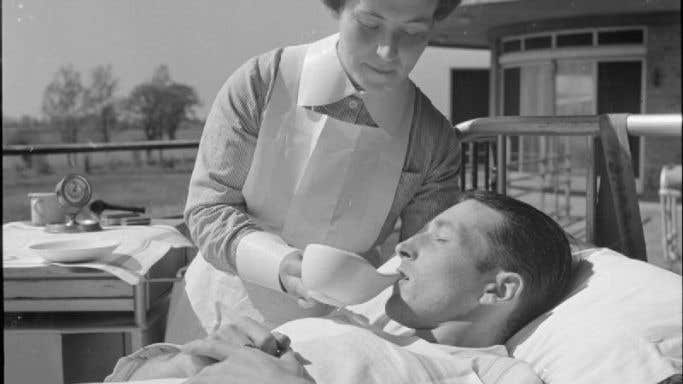This article has been syndicated.
It is a truism that as you go through life the topics you discuss most often with friends tend to follow a predictable pattern. In my experience they go from romance, to children, to work, to health, or rather lack of it (with an occasional foray into property values if you happen to live, as I do, in London).
I, alas, have reached the ill-health stage, and very boring it is too. But a recent month-long tussle with pneumonia (my first) set me thinking about wine for invalids. I am well aware that there are segments of the medical profession who see all forms of alcoholic drink as evil and as liquids to be avoided at all costs even by the healthy, let alone the weak. But presumably they will not be reading this article.
It was not that long ago, less than a century in some cases, that wine was routinely prescribed for invalids. Historic wines such as Tokaji and Constantia built their once-mighty reputations on their ability to confer miraculous health benefits. Pregnant women were encouraged by some doctors and midwives in the early 20th century to drink stout in order to boost their levels of iron, just as drinks such as port were recommended for convalescents. There was a time when Australia’s wine exports were partly built on that rather questionable category ‘tonic wine’ (ie anything that was both strong and sweet).
And even today The London Clinic, one of the most respected private hospitals here, offers its patients a wine list to order from alongside their menu. (Presumably not to anyone with alcohol dependency problems, but everyone else is encouraged to wash down their solids with the most delicious liquid in the world.)
As I went through the stages of bad cold, then flu, then pneumonia, I carefully monitored how I felt about wine while I was feeling ropey. As well as tasting wine professionally most days, I normally drink some wine every evening, so it was a source of amazement to me to find that for about four days I completely lost my appetite and…. my desire to drink wine! This was a very strange sensation, largely driven, I suspect, by such extreme nasal congestion that I could hardly smell a thing.
But then – thank goodness – my sense of smell returned, quite suddenly and quite intensely. I found, for example, that I had to remove a croissant from the bedroom because I just didn’t like its smell. And I found myself equally picky about the scents of the different flowers in the odd bouquet I was so kindly sent.
By the time I really got my thirst back, and I was still spending virtually 24 hours a day in bed at this point, I’m ashamed to report, the one wine I really lusted after was good-quality fizz. I remember this sensation from the few times I have been unwell before. Champagne or any top-quality sparkling wine seems extra revitalising and easy to drink – and perhaps there is some subconscious appreciation that spilling red wine on bedsheets would somehow be more incriminating than drops of anything white.
Even though Louis XIV’s physician famously recommended burgundy in preference to champagne, sparkling wine seems to strike this invalid as not-quite-wine – and its fizz really does seem to act as a pick-me-up. (Is that the echo of Alka-Seltzer in my glass?) As it happened, I had a series of top-quality Franciacortas I needed to taste as my thirst for wine returned, and they absolutely hit the spot initially.
But when, still coughing and spluttering, I started to be well enough to graciously descend the stairs to the kitchen to eat dinner at the communal table, the one wine I found I really, really loved with a passion greater than I had ever felt for it before was port. (Yes, champagne to port is quite a leap, I do admit.)
The smooth richness of it was balm to my poor old throat, and the heady fumes were like cough medicine of the most luxurious kind. For a week or two I wallowed in ports of all sorts – including high-toned, pale tawny wood ports and dense, dark purple vintage ports. The high alcohol levels which in healthier times when I was consuming unfortified wines beforehand seemed rather a deterrent, seemed a plus to me in my depleted state.
Of course there are various wines specifically formulated for medicinal purposes. Prime among them is Barolo Chinato, the very special fortified version of Barolo infused with bark and herbs that is supposed to counter various maladies and fever. In the Swiss canton of Valais, the local grape Humagne Blanc, traditionally infused with local herbs, perhaps cinnamon, saffron and hyssop, was traditionally offered to strengthen women about to give birth.
In general terms, the stronger, sweeter and herbier a wine, the more therapeutic claims tend to be made on its behalf. I could argue that the more wine a patient feels like drinking, the more convincing the recovery. But I would hate to deny one of life’s great pleasures to the infirm.

